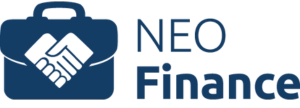
Lithuania
The Baltic states are the pioneers in marketplace lending
The P2P market benefits from a highly digitized infrastructure and attractive interest rates.
Lithuania, with Vilnius as its capital, is a fascinating country with a rich culture and history. Despite its comparatively small population of around 2.7 million people, it offers an impressive quality of life and a stable economy. The head of government, Ingrida Šimonytė, leads the country with responsible political leadership.
Lithuania has a solid economic performance, which is reflected among other things in a GDP per person of 42,765 US dollars. The country has a respectable credit rating of A+ from S&P, which indicates its financial stability and reliability. Lithuania also performs well in the area of sustainability and environmental compatibility, as shown by its impressive ESG rating of A.
The Lithuanian population (eurozone) benefits from an average net monthly income of 1080 euros (2.2k euros), which is an indication of the generally reasonable wage level and the country's economic dynamism. In addition, per capita debt is comparatively low at 1,714 US dollars (29k euros in the eurozone), which is partly due to the solid economic structure.
Lithuania is a leader in digitalization as well as in higher education, a hidden champion among the EU member states. The degree of digitalization in the bureaucracy is particularly impressive. While fax machines are still used in Germany, an electronic signature is used in 75 percent of all cases in Lithuania, according to the World Bank's Doing Business report. This environment is a major advantage for platforms that originate loans. On the one hand, the entire application process can be handled digitally and, on the other, debt collection in the event of a loan default can be carried out via digital channels.

- Founded in 2014
-
Regulated by the central bank
-
Listed: ISIN: LT0000132953
-
Holds an EMI license allowing business throughout the EU
-
Profitable as a company
-
Possibility to sell the acquired shares on the secondary market

-
Founded in 2015
-
Regulated by the central bank
-
Profitable as a company
-
Possibility to sell the acquired shares on the secondary market

-
Founded in 2014
-
Regulated by the central bank
-
170 thousand customers and 39 thousand registered investors
-
Profitable as a company
-
Possibility to sell the acquired shares on the secondary market
Management


Evaldas Remeikis


Darius Noreika


Audrius Žiugžda
Dealing with late payments
Dealing with late payments varies depending on the platform. Some platforms only use in-house solutions and others use external service providers. Below is an example of Finbee's in-house debt collection with the following process structure:

- In almost all cases of late payment, these can be resolved in the regular debt collection cycle
- In the event of insolvency, payments are made as part of the previously agreed payment plan
- The end of the insolvency procedure leads to the extinction of all outstanding claims from lenders
Portfolio in Lithuania
12,4%
Interest on newly issued loans (static across all risk classes)
1.206€
average loan amount
2,96
years average remaining term
1,8%
average failure rate
10,2%
annualized return
Consumer loans: Uncorrelated and high-yielding
Regulation of P2P platforms and consumer loans in Lithuania
In Lithuania, P2P consumer loans are regulated by the Law on Consumer Credit and all platforms with other financial service providers (consumer credit providers, banks, credit unions, e-money institutions) are supervised by the Central Bank of Lithuania. When assessing creditworthiness, we must ensure that the customer has a sustainable income and that their debt-to-income ratio does not exceed 40%. All income and liabilities must be supported by data from external registers or information provided by the customer. Annual interest rates are limited at 75% and all additional fees are capped at 0.04% per day from loan origination to maturity. These requirements apply to all types of loans, including small consumer loans (payday loans).
The following databases are used:
- Database managed by the National Social Insurance Institution under the Ministry of Social Security and Labor. National database containing income data of all persons with employment contracts.
- Database managed by the Central Bank of Lithuania. The national database contains data on all types of loans (consumer, mortgage, leasing and credit card loans) granted by supervised lenders (consumer credit providers, P2P lending platforms, banks and credit cooperatives).
- Scorify commercial register, which contains loan data and current and historical overdue debts with creditors, telecoms companies, utility providers and debt collection agencies.
- Creditinfo Commercial Register, which contains current and historical overdue debts owed to creditors, telecommunications companies, utility providers and debt collection agencies.
- Population register, which is managed by the State Enterprise Center for Registers. National register containing data on the registration address of individuals, the type and validity of identity documents, marital status and spouse data, and the number of children.
- NASIS - national register managed by the Bank of Lithuania, which contains data on persons who do not wish to take out new loans.
- Bankruptcy Register - national register containing data on previous and current cases of personal bankruptcy.
- The Real Estate Register, which is managed by the State Enterprise Center for Registers. National register containing data on real estate owned by individuals.
In Lithuania there is no maturity date for debts, the only way for a person to have their debts discharged is to go through a personal bankruptcy procedure. Personal bankruptcy is not common in Lithuania. A petition for personal bankruptcy can only be filed if the debt exceeds 21,000 euros, and personal bankruptcy can be filed once every 10 years.
According to the Consumer Credit Act, a consumer credit agreement can only be terminated if the person is at least 90 days in arrears. The judicial collection procedure is a standardized procedure that takes 2-4 months until a court order is received. Once the court order has been received, it is forwarded to a bailiff for enforcement. The bailiff can seize the debtor's bank accounts, real estate or other registered assets such as cars or motorcycles and contact the debtor's employer with a request to transfer part of the debtor's salary directly to the bailiff.

